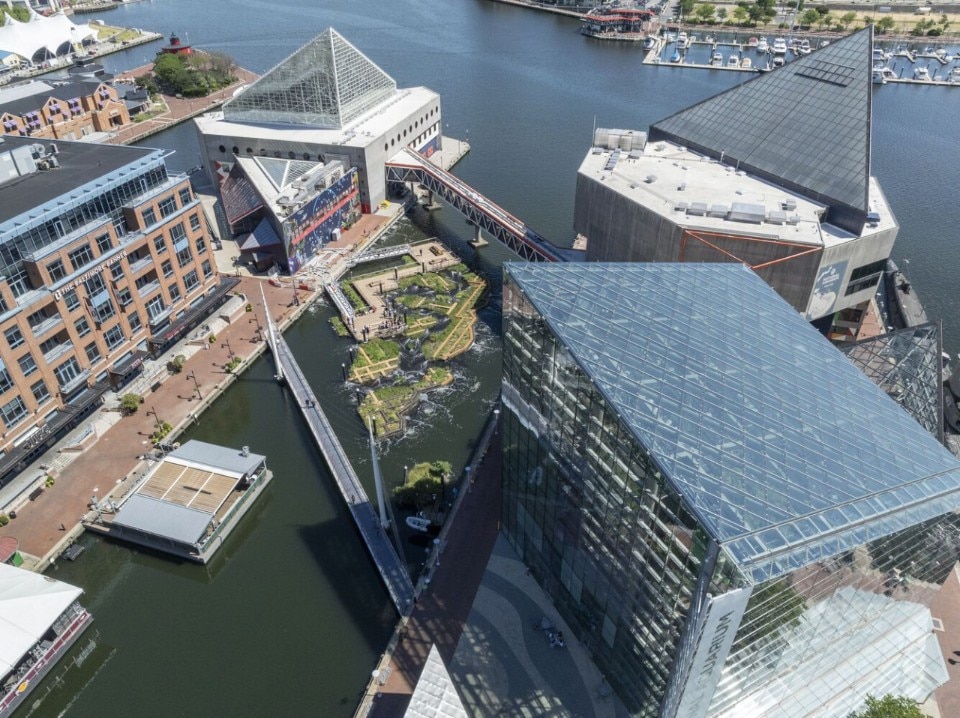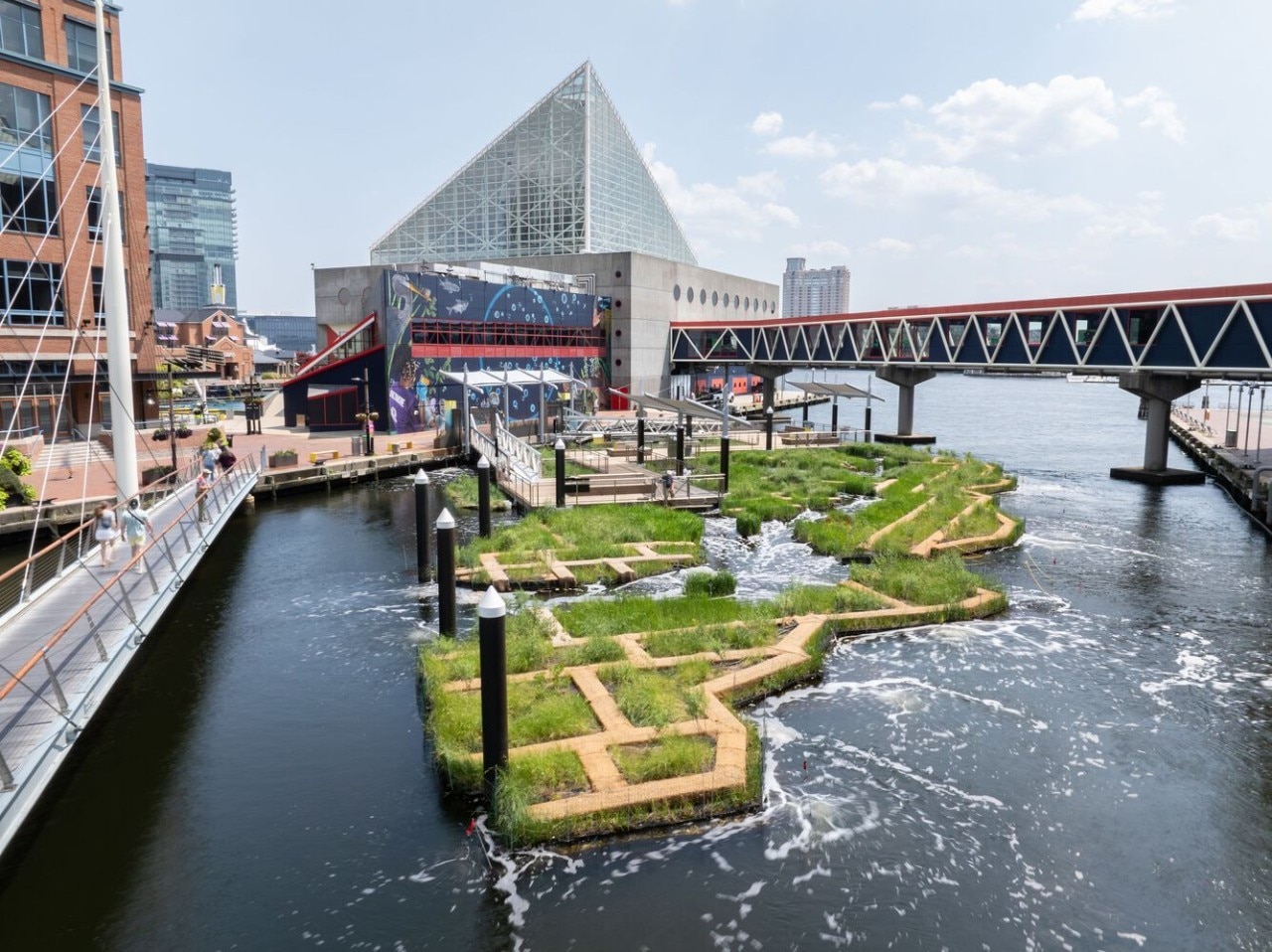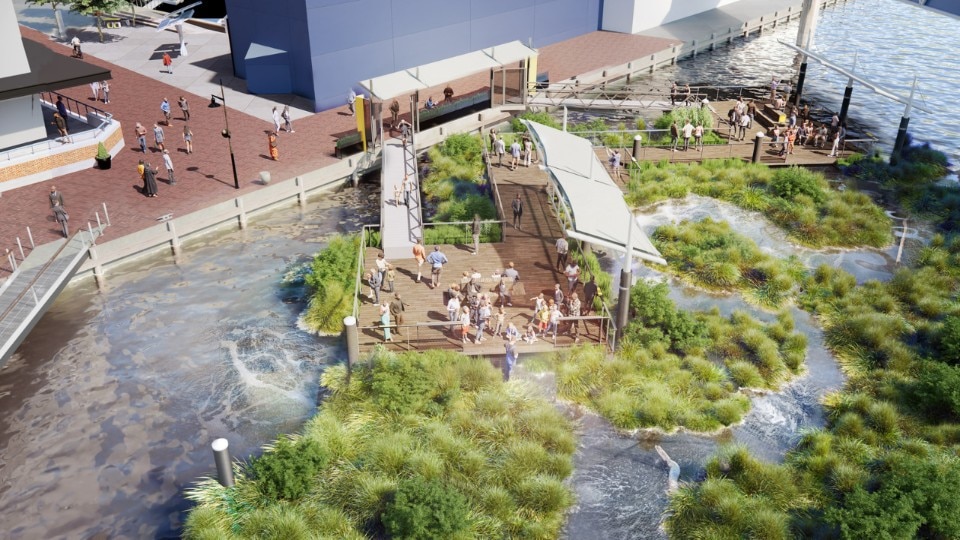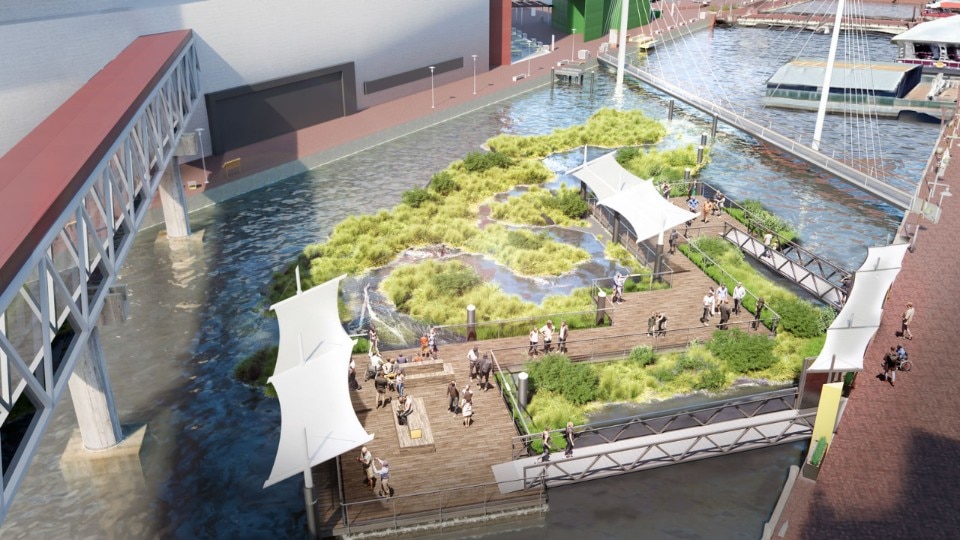Located in Baltimore's Inner Harbor, the prestigious National Aquarium collaborated with Ayers Saint Gross to produce a sustainable, high-performance floating wetland to expand the natural habitat of its campus. The institute's ambition is to inspire conservation of the world's aquatic treasures by transforming its campus into a demonstration landscape. Called Harbor Wetland, the natural habitat recently opened to the public with a total area of approximately 1,000 square metres of salt marsh.
The project grew out of an earlier Waterfront Campus Plan, also completed by Ayers Saint Gross. That project led to the design of a prototype floating wetland, for which the firm collaborated with the National Aquarium and Biohabitats, McLaren Engineering Group and Kovacs, Whitney & Associates, in continuity with the EcoSlip concept, an innovative approach to creating floating wetlands created by Studio Gang.

The knowledge gained from years of studying and refining the prototype became the basis for the design process of the full-scale implementation of the Harbor Wetland.
Architects and aquarium staff devised an innovative pontoon technology to create an artificial version of the natural wetlands that once defined the region's coastline. The $14 million project is already attracting molluscs, fish and seabirds, as well as other creatures. During opening hours, the wetland also functions as a floating park, with an elevated walkway, seating and shade structures designed to attract land-based visitors as well.
In addition to being a social space, the wetland uses over 30,000 grasses and shrubs combined with water aeration technology. Once the plants have matured, the exhibition will act as a green infrastructure to promote healthy, clean water, attract native species and provide a variety of habitats to support a strong ecosystem.















